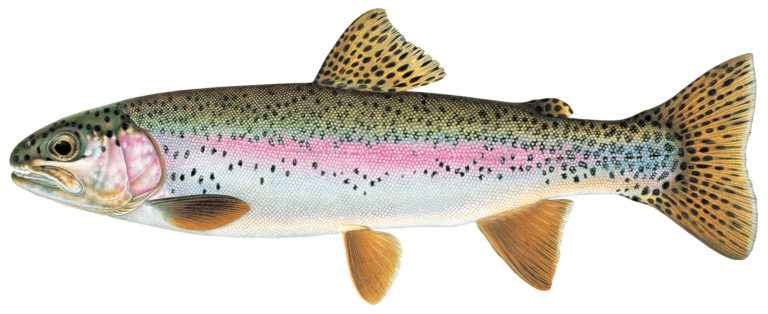Montana

Overview
Where would Montana be without the rivers that run through it? Montana’s Priority Waters flow across breathtaking landscapes and remote wilderness areas and are home to some of America’s most iconic trout fisheries. From catching a coveted Yellowstone cutthroat trout to floating the Smith River and enjoying one of the most rugged landscapes in the United States, Montana’s distinctive angling feeds the state’s deep-rooted commitment to conservation. The Big Sky State’s Priority Waters include the Yellowstone, the Upper Missouri, the Clark Fork, and the Kootenai basins, encompassing famed rivers like the Madison, the Bighorn, and the Gallatin. Through our work with local partners and state and federal agencies, we are reconnecting streams, restoring habitat, improving climate resilience, and protecting native trout strongholds.
Threats & Opportunities
Climate change is a cross-cutting issue affecting all waters in Montana. Impacts to coldwater fisheries include reduced snowpack, earlier runoff, reduced summer stream flows, increased summer water temperatures, and increased frequency and duration of drought. The state’s rich industrial history has also left wild and native trout waters in peril. Pollution, habitat fragmentation, competition with non-native species, and water use issues stress fisheries. We are working with agricultural partners to conserve water, improve habitat, and maintain rural landscapes.
How We Work
Reconnection
Many of Montana’s waters are fragmented by historical mining, outdated land management practices, and drought, but critical species like bull trout need clean, cold, connected water to survive – that’s why we’re reconnecting 64 miles of bull trout habitat in the Upper Clark Fork alone. From fish passage for Yellowstone cutthroat trout to dam removal on Rattlesnake Creek, this work will ensure that Montana’s watersheds remain clean and cold for years to come.
Habitat Restoration
We are restoring and rehabilitating critical habitat for bull trout, Yellowstone cutthroat, and Westslope cutthroat, among other species. For example, removing about 1,500 dump trucks worth of toxic mine tailings from Flat Creek will enhance water quality for native trout and the Superior community. By reconnecting rivers, removing pollutants, and building productive riparian zones, these habitats will thrive for Montana’s native fish and wildlife.
Advocacy
Protecting the Smith River from mining, saving Red Rock Lake Arctic grayling, collaborating on water use and drought planning: we work with decision-makers, community leaders, and elected officials across the state to ensure our lands and rivers are protected for generations to come.
How You Can Help
Connect with other volunteers and learn how you can help recover Montana’s rivers and streams.
TAKE ACTIONStay informed about what Trout Unlimited is doing in your state.
FOLLOW US
Montana Conservation Team

Casey Hackathorn
Montana State Director
casey.hackathorn@tu.org
Montana State Director
casey.hackathorn@tu.org

David Brooks
Executive Director, Montana Trout Unlimited
david@montanatu.org
Executive Director, Montana Trout Unlimited
david@montanatu.org
Priority Waters

-
Yellowstone River Headwaters
Encompassing the entire native range of the Yellowstone cutthroat trout in Montana and some of Montana’s most renowned fisheries, this Priority Water includes Yellowstone National Park and the Paradise Valley, along with the Shields, Boulder, Stillwater, and Bighorn rivers. Our efforts to recover the Yellowstone cutthroat trout include reconnecting habitats to support migratory populations, isolating genetically pure populations, and working with local partners to improve streamflow and climate resilience. We work with private landowners, conservation districts, partner organizations, and state and federal agencies to ensure a collaborative approach to watershed management and habitat enhancement.
-
Upper Missouri River
The Upper Missouri basin includes the Red Rock, Ruby, and Big Hole subbasins, as well as the Gallatin, Smith River, and Jefferson River. In the Upper Missouri, TU leads restoration efforts for native Westslope cutthroat trout and Arctic grayling, which involves watershed-scale re-establishment efforts, habitat improvement, reconnection, and in-stream flow work. Dewatering is also a challenge in this basin. Montana TU works with farmers, private landowners, and the state to secure more water in-stream and protect against drought, in addition to overseeing the Jefferson Watershed Program. Further, TU’s Gallatin Home Rivers Initiative, supported by Simms, collaborates with community members to prioritize restoration projects that help wild trout thrive in the fastest-growing county in Montana.
-
Clark Fork River
In the Clark Fork Basin, TU works to preserve and enhance native Westslope cutthroat trout and bull trout strongholds in the Flint Rock, Blackfoot River, Middle Clark Fork, and Bitterroot watersheds. Our restoration work spans from the headwaters near Butte all the way to the Idaho border. This includes rehabilitating the largest geographic complex of Superfund sites in the country, mitigating the impacts of historical mining activity, reconnecting tributaries, and minimizing the impacts of non-native species. Long-term partnerships with key federal agencies, including the U.S. Forest Service, drive much of our work on tributaries like Ninemile and Rattlesnake Creek.
-
Kootenai River
The Kootenai River is home to the only population of native redband trout in Montana as well as bull trout and Westslope cutthroat trout. Unfortunately, transboundary selenium pollution from upstream coal mines threatens fisheries in the basin. Montana TU works with private, state, federal, and tribal partners to restore habitat and protect water quality. Meanwhile, TU’s Water Program is helping adjudicate water rights in the Kootenai, protecting against proposed expansions that would threaten trout populations that rely on cool, clean water.



















